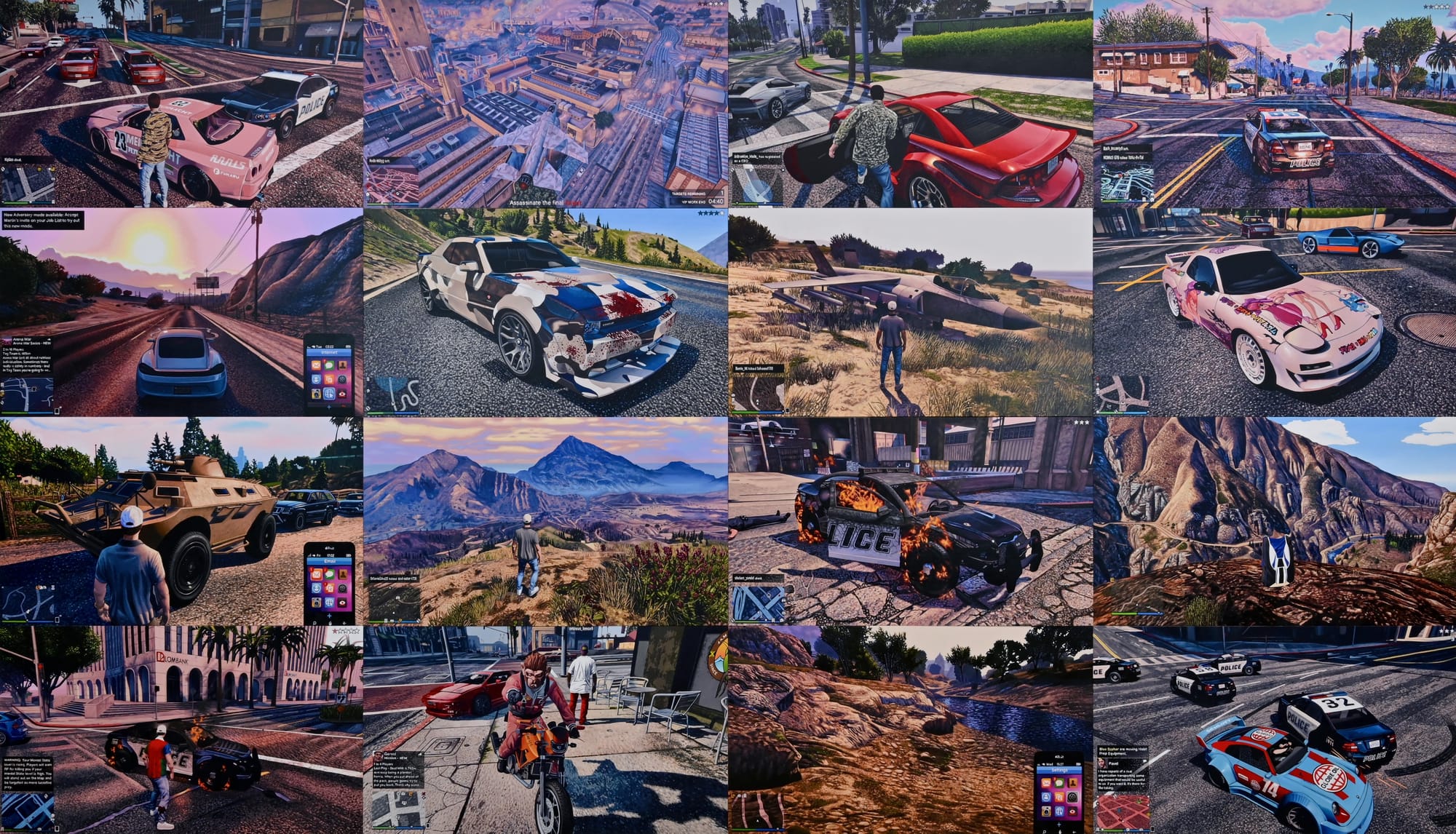ESSAY: PLAY-TO-PAINT IN LOS SANTOS (PART TWO OF TWO) [EXCERPT]

For the 2023 exhibition Re_spawn, also at The Hole, Zefeldt revisited GTA V and GTA Online after several years of technical and conceptual refinement. Here, the emphasis falls more explicitly on avatar identity and the blurring of realities. The show consists of paintings drawn from sessions in which his customised avatar drives, crashes, fights, and explores in the company of other players’ characters. These subjects became quasi-autobiographical subject matter.
The title Re_spawn explicitly points to game mechanics. To respawn is to re-enter the action after death with minimal penalty. Zefeldt connects this cycle to what he sees as the game’s uncanny status as a mirror world. As he explains, “The imagery in the paintings directly reference the people, places, and things in LA, but through the uncanny double filter of reconstructing this place in polygons and pixels, and then redescribed in the medium of painting, further complicating the ever-growing slipperiness between different realities.” In other words, Los Santos, Rockstar’s ersatz Los Angeles, is already a simulation of a simulation by the time it reaches the wall. His paintings from 2020-23 oscillate between action and contemplation within this sui generis mirror: jets hover in iridescent skies, cars hang in implausible positions on canyon roads, an avatar lingers in front of a panoramic view of the Hollywood Hills. HUD elements such as mini-maps and health bars occasionally intrude, reminding the viewer that this landscape is governed by code. It’s not just a matter of aesthetics: the stakes are ontological.
The violence in Re_spawn is oddly bloodless, especially if compared with the works we discussed in the previous installment of this series. Bodies are often cropped, turned away, or left intact despite implied impacts. In one canvas, a dead character lies supine and unbloodied, half outside the frame; in others, the moment just before collision becomes the central motif. The paintings invite viewers to consider why acts that would be catastrophic in the physical world can be consumed as light entertainment in a virtual one, and how that shift affects our sense of risk, responsibility, and consequence. Zefeldt addresses ambiguous ethics of painting simulated violence in an insightful conversation with Office Magazine’s John Martin Tilley: “There’s this kind of digital immortality that supersedes the violence, death and destruction… It’s not something you’d play with in the real world, but it’s something that you get to do in this virtual one.” That “digital immortality” is exactly what painting suspends. Once translated to canvas, the avatar no longer respawns; crashes and deaths can no longer be cleared with a button press. The works slow the loop of consequence-free destruction and convert it into a scene that demands sustained attention, turning a mechanic of endless replay into a question about how viewers metabolise images of harm when the safety net of interactivity disappears.
